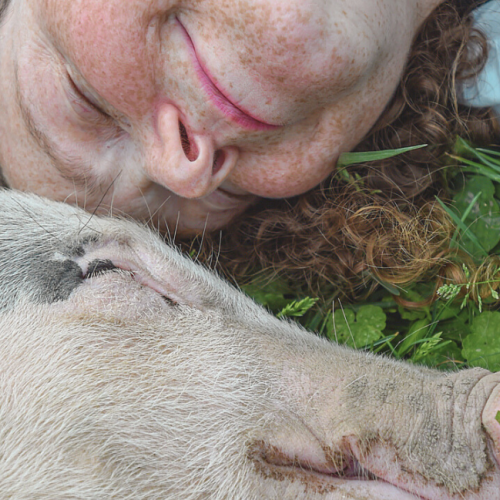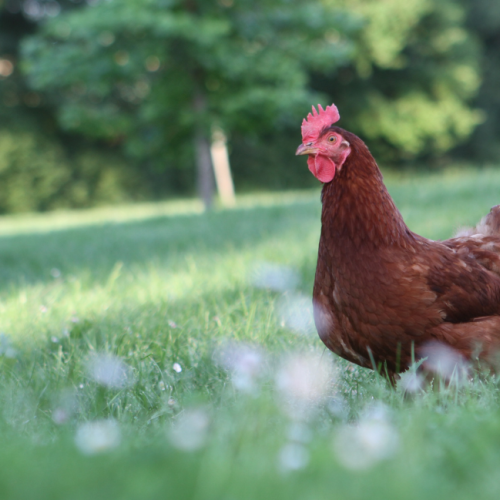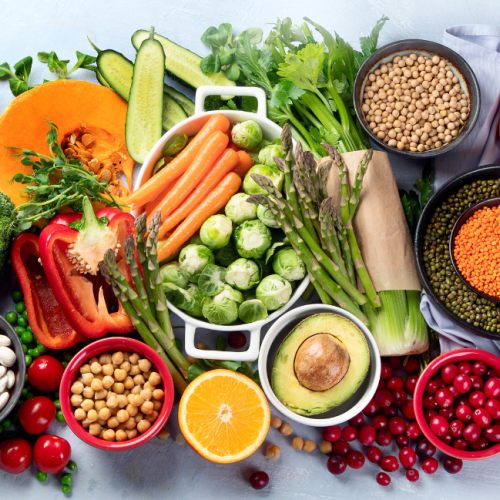How to eat like the Blue Zones
The Blue Zones are regions around the world where people live the longest, healthiest lives. These areas—Ikaria (Greece), Okinawa (Japan), Sardinia (Italy), Nicoya (Costa Rica), and Loma Linda (California, USA)—share common dietary habits that prioritise plant-based eating, whole foods, and minimal processed ingredients. As Singapore embraces plant-based initiatives, it’s paving the way to join the ranks of these longevity hotspots.

We love this Longevity Stew from Marilena's Kitchen
Eating like people do in the Blue Zones can significantly improve your overall health and longevity. They focus on whole, plant-based foods like vegetables, legumes, whole grains, nuts, and healthy fats, while minimising processed foods and animal products. By adopting these eating habits, you can reduce your risk of chronic diseases such as heart disease, diabetes, and certain cancers, support a healthy weight, improve digestion, and promote mental clarity. Additionally, the emphasis on natural, nutrient-dense foods fosters sustainable energy levels and overall vitality, helping you thrive at any age.
If you're participating in No Meat May or just looking to embrace a healthier lifestyle, here’s how to incorporate Blue Zone-inspired, meat-free eating into your life—with recipes from each region!
Ikaria, Greece: Embrace the Mediterranean Diet
Ikarians thrive on a diet rich in legumes, vegetables, whole grains, and olive oil, with minimal meat consumption, and limited dairy. Meals are built around nutrient-dense plant foods, often enhanced with herbs like oregano, dill, and parsley. A favorite ingredient is black-eyed peas, often paired with wild greens and herbs.
Suggestions:
- Make legumes the main protein source in your meals (eg. black-eyed peas, chickpeas, and lentils).
- Use olive oil liberally in cooking and as a dressing for salads or roasted vegetables.
- Incorporate herbs and spices to boost flavor and antioxidants.
- Eat whole grains like barley or bulgur instead of refined grains.
Recipe: Ikarian Black-Eyed Peas and Greens
This simple yet flavorful dish combines black-eyed peas, leafy greens, and olive oil for a heart-healthy, satisfying meal.

These Miso Tofu stuffed Sweet Potatoes from Taste pack a real flavour bomb!
Okinawa, Japan: Power of Sweet Potatoes
Okinawans have one of the highest life expectancies in the world, largely thanks to their diets, which are rich in sweet potatoes, tofu, seaweed, and vegetables. The purple sweet potato is a staple, packed with antioxidants and complex carbohydrates for sustained energy.
Suggestions:
- Replace refined carbs with sweet potatoes as a nutrient-dense source of energy.
- Add tofu to meals for a high-quality plant-based protein.
- Use seaweed in soups, salads, or as a seasoning to add minerals like iodine and calcium.
- Practice “Hara Hachi Bu,” the Okinawan principle of eating until you’re 80% full.
Recipe: Miso Tofu Stuffed Sweet Potato
This vibrant dish combines sweet potatoes, tofu, and a vibrant miso dressing to create a balanced and nutritious dish.
Sardinia, Italy: Whole Grains and Beans
Sardinians enjoy a traditional Mediterranean diet, with a strong emphasis on whole grains, beans (like fava beans and chickpeas), and seasonal vegetables. They often eat soups and stews that are packed with flavor and nutrients, enjoyed with their own home baked bread.
Suggestions:
- Incorporate ancient grains like barley, farro, and millet into soups, salads, or as a side dish.
- Make beans a daily part of your meals, whether in soups, stews, or salads.
- Use olive oil as your main cooking fat, and enjoy it drizzled over whole-grain bread or roasted vegetables.
- Prepare simple, hearty dishes like minestrone soup that combine grains, beans, and vegetables.
Recipe: Sardinian Barley and Bean Minestrone
This classic Sardinian soup features barley, beans, and fresh vegetables for a hearty, warming meal.

This Creamy Bean & Squash Soup from the Blue Zones website is simply delicious!
Nicoya, Costa Rica: Beans, Corn, and Squash
The Nicoyan diet is based on the "three sisters" of Central American agriculture: beans, corn, and squash. These staples are rich in fiber, vitamins, and minerals, providing a balanced and sustainable source of energy. Nicoyans also enjoy tropical fruits like papaya and plantains.
Suggestions:
- Use black beans as a protein base in soups, stews, or rice dishes.
- Incorporate corn in the form of tortillas, masa (corn dough), or fresh kernels.
- Add squash varieties like pumpkin or butternut to soups and casseroles for extra nutrients.
- Experiment with tropical fruits like papaya, which is high in antioxidants and enzymes.
Recipe: Nicoyan Bean and Squash Bowl
This recipe highlights black beans, squash, and simple seasonings for a delicious and wholesome dish.
Loma Linda, California: Adventist Plant-Based Lifestyle
The Seventh-day Adventists in Loma Linda predominantly eat a plant-based diet rich in fruits, vegetables, nuts, and legumes. They avoid alcohol, caffeine, and processed foods, prioritising whole, natural ingredients. Almonds are a standout food, known for their heart-healthy fats and protein.
Suggestions:
- Snack on a handful of nuts daily, particularly almonds or walnuts.
- Eat a wide variety of fresh fruits and vegetables every day, aiming for a rainbow of colors.
- Replace sugary snacks with dried fruit and nut mixes.
- Incorporate legumes like lentils and chickpeas into salads, soups, or spreads like hummus.
Recipe: Lentil & Walnut Tacos
This hearty and flavorful recipe combines lentils and walnuts to create a plant-based taco filling that’s rich in protein, fiber, and heart-healthy fats. It’s versatile and can be used in tacos, burritos, salads, or grain bowls.

We can't get enough of these meaty Lentil & Walnut Tacos from Sweet Simple Vegan
Singapore: A Modern Blue Zone in the Making
Singapore is emerging as a modern Blue Zone, thanks to its focus on plant-based innovation and sustainable eating. Traditional dishes often include tofu, fresh vegetables, and rice or noodles, which are easily adapted into plant-based versions.
Suggestions:
- Explore plant-based versions of traditional Asian dishes like laksa, dumplings, or stir-fries.
- Use tofu, tempeh, or edamame as protein-rich meat alternatives.
- Embrace flavorful spices, herbs, and condiments like ginger, lemongrass, and chili to elevate simple meals.
- Focus on balance and portion control, a key principle in Singaporean cuisine.
Recipe: Singaporean Vegetable Laksa
This fragrant and spicy noodle soup is packed with tofu, vegetables, and coconut milk, making it both satisfying and comforting.

There's nothing better than a bowl of steaming Laksa, and this recipe from Lazy Cat Vegan hits the spot!
By eating like the long-living legends from the Blue Zones, you’re not only reducing your environmental impact but also nourishing your body for a longer, healthier life. Whether it’s black-eyed peas from Ikaria or laksa from Singapore, these recipes bring the flavors of longevity to your plate, and can help you feel more vibrant and energized every day.
What Blue Zone-inspired recipe will you try first? Let us know in the comments below!











3 Comments